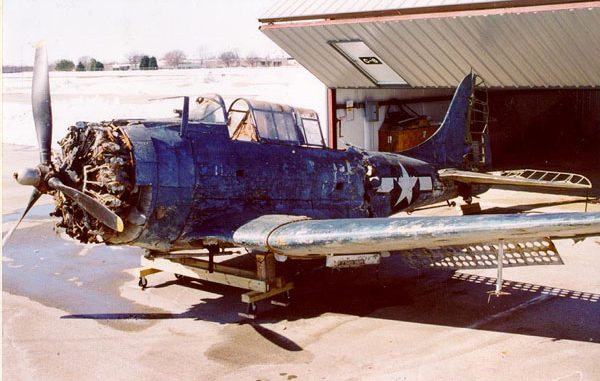
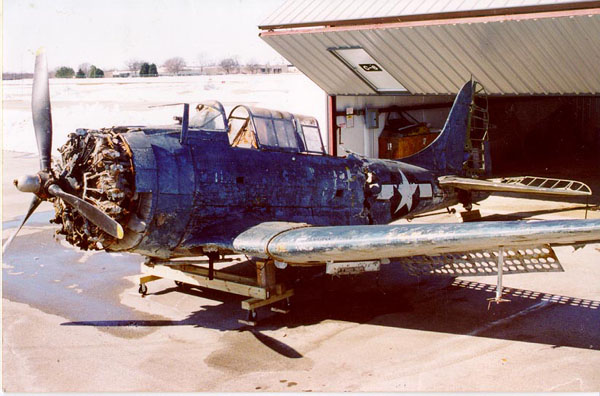
(Image Credit: Vultures Row Aviation)
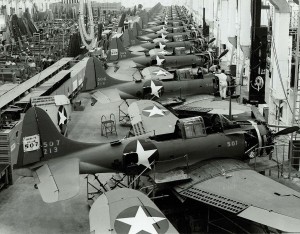
(Image Credit: US Navy)
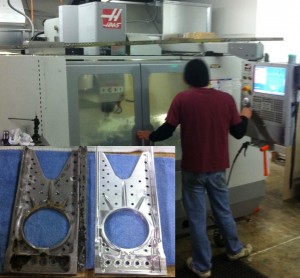
(Image Credit: Vultures Row Aviation)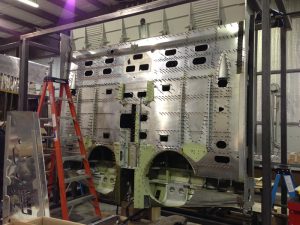
(Image Credit: Vultures Row Aviation)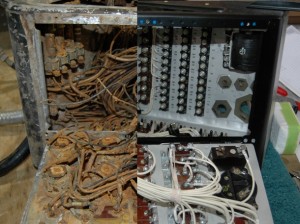
(Image Credit: Vultures Row Aviation)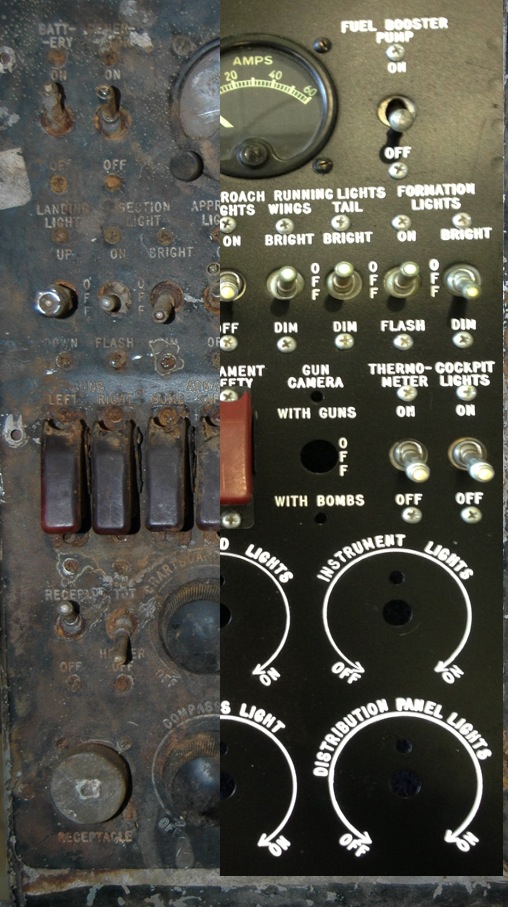
(Image Credit: Vultrues Row Aviation)
In the mid-nineties the National Museum of Naval Aviation contracted A&T Recovery of Chicago, Illinois to recover some of the estimated 135-300 lost WWII-era planes lost in the lake while training with the USS Sable or its sister ship the USS Wolverine during their years in use. Under the terms of the agreement A&T would hold one of the planes raised and the museum would have a year to pay for it. A&T Brought 10694 to the surface in 1994 and after a year with no payment from the Museum, they received clear title to the remains.
The plane was first sold to a collector in Florida, then by collector Jim Slattery for a planned Naval aircraft museum in San Diego, California. Slattery sent the Dauntless to Vultures Row for restoration, arriving in 2011. Vultures Row, named after the nickname given to the observation area(s) located on the island of an aircraft carrier from which observers can view flight deck operations, specializes in US Navy tail hook planes, and is no stranger to restoration, having already produced two national multi-award winning aircraft, a North American T-28C Trojan and a North American SNJ-5C Texan. The Vultures Row Aviation facility blends old world low tech craftsmanship including english wheels, wooden forms and traditional metal forming techniques and cutting edge technology, laser scanning parts and 3D modeling from which their CNC machines which can accurately reproduce a part within 1/5000th of an inch, from either a laser scan or from CAD files generated from their extensive research library of original Microfilm engineering drawings.
After nearly three years under Vultures Row care, the Dauntless’s major assemblies are coming together and it is beginning to look like a plane again, being rebuilt along side the other major restoration project underway, Curtiss SB2C Helldiver. Once completed the Dauntless will join Slattery’s extensive collection of 40+ airworthy warbird aircraft at the announced, but yet to be completed, Greatest Generation Naval Museum as well as being campaigned to air shows in the Western United States.
Born in Milan, Italy, Moreno moved to the U.S. in 1999 to pursue a career as a commercial pilot. His aviation passion began early, inspired by his uncle, an F-104 Starfighter Crew Chief, and his father, a military traffic controller. Childhood adventures included camping outside military bases and watching planes at Aeroporto Linate. In 1999, he relocated to Atlanta, Georgia, to obtain his commercial pilot license, a move that became permanent. With 24 years in the U.S., he now flies full-time for a Part 91 business aviation company in Atlanta. He is actively involved with the Commemorative Air Force, the D-Day Squadron, and other aviation organizations. He enjoys life with his supportive wife and three wonderful children.


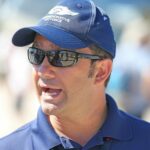
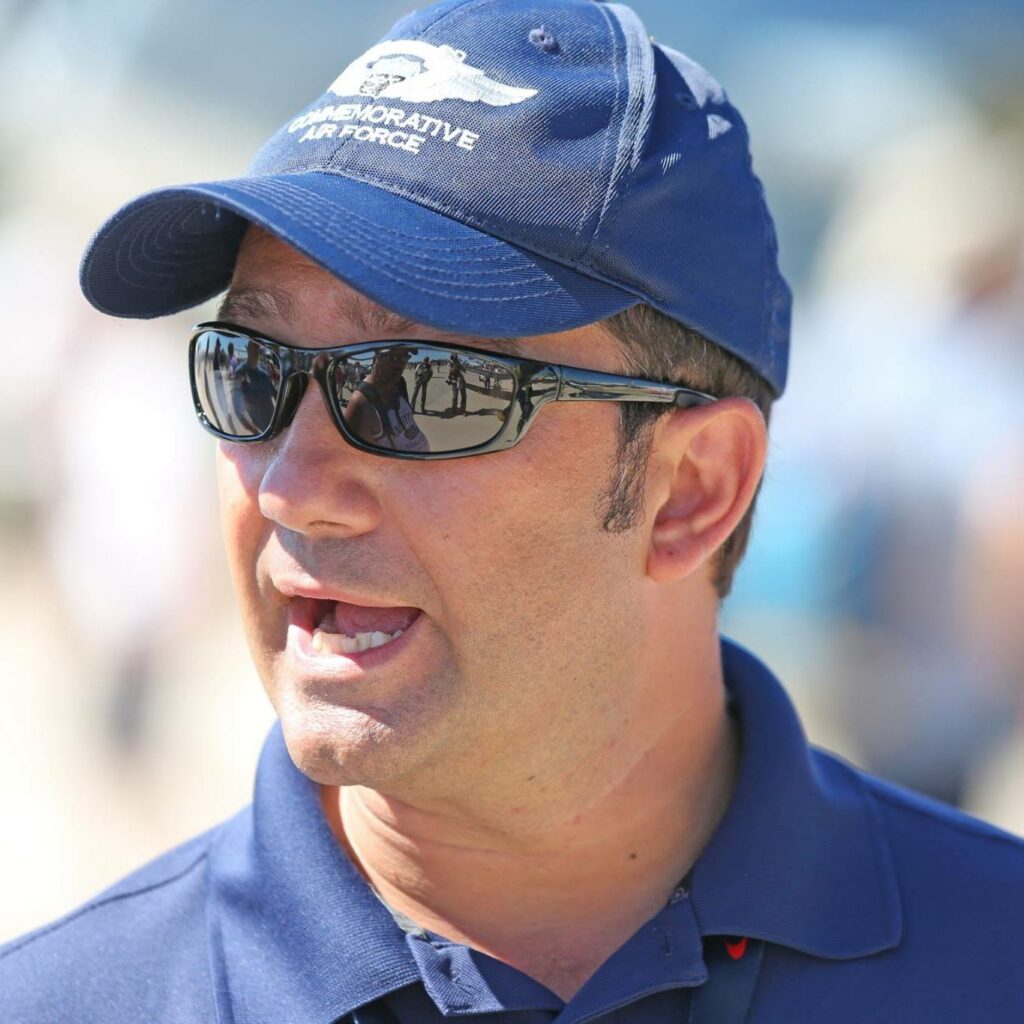

God bless you for restoring this plane. How does one get to fly in it.
The “Helldiver” never fully replaced the Dauntless, the SBD was used until the end of the war by Marine pilots. Most know it was the “Dauntless” that ripped the heart of the Japanese fleet at Midway. I hope the restoration is going well and it’s soon I can see that beauty where it belongs…in the air once again…
I know this is going to sound crazy, but over a decade ago I remember seeing something on TV about this plane. It was just hours after I drug home my first air-cooled Volkswagen. I saw how they were bringing it up out of the water and they were going to rebuild it. I said, “Me too! Your name is going to be Dauntless!” After sitting for 23 years, I got him running and driving. It turns out he is a special edition. One of only a thousand. Almost 11 years later, I have driven him from California to Virginia where for over 5 years I have been driving over a thousand miles a week, steadily. He’s got his own Facebook page where I document all my miles, gas receipts, GPS maps, at etc. By my estimations I will reach 600000 miles in early July or a little sooner. My license plate this year says DIVBMR 🙂
https://m.facebook.com/1972dauntlessvwbug/